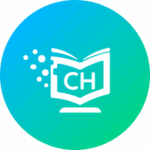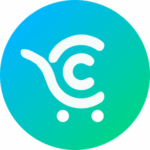In today’s fast-paced workplace, fostering a culture of continuous feedback and peer learning is vital for organizational growth and innovation. Traditional top-down performance reviews are no longer sufficient to meet the dynamic needs of modern employees and business environments. Instead, organizations that prioritize ongoing, real-time feedback and collaborative learning empower their teams to adapt quickly, sharpen skills, and sustain long-term success.
Continuous feedback involves regular, constructive exchanges of insights between colleagues and managers, enabling employees to proactively improve their performance. This approach enhances transparency and builds trust within teams. Meanwhile, peer learning leverages the collective knowledge and diverse perspectives of employees, creating an environment where shared expertise sparks innovation and effective problem-solving.
Research shows that companies embracing these practices benefit from higher employee engagement, increased retention, and greater agility in market responsiveness. Such a culture cultivates an inclusive, motivated, and high-performing workforce — essential traits for thriving in today’s competitive landscape. As workplaces continue to evolve, integrating continuous feedback and peer learning becomes critical for building resilient, adaptable, and forward-thinking organizations.
Start Scaling Your L&D Today with Free Tools
Unlock the Potential of Free Tools to Revolutionize Your Learning Strategy!
Top Free Tools to Facilitate Continuous Feedback in the Workplace
Developing a feedback-rich environment is essential for employee development, performance improvement, and cultivating a positive organizational culture. Fortunately, numerous free digital tools support real-time communication, performance discussions, and progress tracking without additional costs. These accessible platforms help managers and teams stay connected, ensure timely feedback, and promote transparency across the organization.
Popular Free Platforms for Continuous Feedback
- Slack: A widely used collaboration tool offering real-time messaging for performance discussions, recognition, and casual check-ins. Its free tier supports dedicated channels and integrations like Simple Poll or Donut for gathering informal feedback or scheduling meetings.
- Microsoft Teams: Included in many Office 365 subscriptions, supporting chat, calls, and shared document collaboration. The free version aids ongoing dialogue, quick feedback exchanges, and scheduled check-ins without extra tools.
- Google Forms: A versatile, free survey tool ideal for structured feedback, pulse checks, and anonymous input. Its simple sharing and real-time response collection make it perfect for continuous performance evaluations.
- Trello: A visual project tracking platform that helps set goals, log successes, and identify improvement areas—enhancing transparency and accountability over time.
- Mentimeter: Known for interactive polls and surveys, Mentimeter can be used during team meetings to gauge instant feedback and promote a culture of continuous improvement.
Functionalities Supporting Feedback Culture
- Real-Time Feedback: Instantly share observations or praise, accelerating professional growth.
- Performance Discussions: Frequent or spontaneous chats for ongoing performance dialogue.
- Progress Tracking: Visualize development milestones, facilitating continuous assessment.
Implementing these free digital tools empowers organizations to cultivate open communication, enhance adaptability, and embed transparency. By integrating these solutions into daily routines, companies can boost employee engagement and achieve sustained success without incurring extra expenses.
Slack & Microsoft Teams: Streamlining Instant Feedback
In fast-paced work settings, effective communication platforms like Slack and Microsoft Teams have become essential for fostering quick, effective feedback. These tools support seamless, informal exchanges that strengthen collaboration and decision-making processes.
Both platforms serve as centralized hubs where employees can share updates, clarify doubts, and exchange instant feedback. Their instant messaging features reduce delays characteristic of email, enabling prompt issue resolution and project momentum.
Key Features Supporting Instant Feedback
- Real-Time Messaging: Facilitate immediate responses, crucial for dynamic workflows.
- Channels and Threads: Organize discussions around specific topics, keeping context clear.
- File Sharing & Integrations: Seamlessly exchange files and connect with other apps, streamlining review processes.
- Presence Indicators: See colleagues’ availability, fostering spontaneous feedback opportunities.
Structured Feedback Mechanisms
Scheduled meetings, polls, and integrated task tools within Slack and Teams create formal and informal feedback channels. For example, quick polls help gauge team sentiment, while integration with task apps converts feedback into action points.
Advantages of Using Slack & Teams for Feedback
- Responsiveness: Faster responses reduce project delays.
- Collaboration: Promotes teamwork through instant exchanges.
- Communication Record: Conversation logs serve as references for future needs.
- Accessibility: Supports remote and hybrid work models for continuous feedback flow.
By establishing clear communication protocols and training teams on platform features, organizations can maximize the benefits of Slack and Teams, cultivating a responsive, transparent, and agile collaboration culture.
Google Forms and SurveyMonkey: Gathering Anonymous and Structured Input
Collecting feedback efficiently is key to improving workflows and understanding employee sentiment. Tools like Google Forms and SurveyMonkey simplify the creation of structured and anonymous surveys, empowering organizations to gather honest insights quickly and securely.
Both tools offer user-friendly interfaces and customizable question formats—multiple choice, Likert scales, open-ended responses—making targeted feedback easy to implement. Their cloud-based nature ensures real-time data collection and aggregation for rapid analysis.
Advantages of Google Forms & SurveyMonkey
- Ease of use and flexible question types tailored to organizational needs.
- Anonymous response options promote honest feedback, especially on sensitive issues.
- Structured surveys enable quantitative analysis of key metrics like engagement or policy effectiveness.
- Multiple sharing channels—email, intranet, QR codes—for broad accessibility.
Best Practices for Effective Feedback Collection
- Keep surveys concise and focused for higher completion rates.
- Inform participants about confidentiality and purpose beforehand.
- Pilot test surveys for clarity and effectiveness.
- Communicate findings and show how feedback informs change to motivate participation.
Utilizing Google Forms and SurveyMonkey enhances openness and continuous improvement, providing organizations with reliable, scalable means to gather valuable insights without cost barriers.
TINYpulse Free: Employee Engagement and Pulse Surveys
TINYpulse Free offers organizations a simple yet powerful tool to monitor employee engagement through regular pulse surveys. Designed to promote open dialogue and identify improvement areas, it helps companies of all sizes harness timely insights about their workforce without financial investment.
This streamlined platform allows HR and leadership to deploy periodic surveys—weekly, bi-weekly, or monthly—that quickly gauge satisfaction, management effectiveness, and remote work experiences. Respondents can submit feedback anonymously, fostering honesty and trust.
TINYpulse aggregates survey data into easy-to-understand reports, highlighting trends critical for informed decision-making. While more advanced analytics are available in paid tiers, the free version provides essential insights to maintain engagement and address issues proactively.
Organizations benefit from cost-effective insights, frequent check-ins, and actionable data—all crucial for maintaining a motivated, satisfied workforce. As needs grow, solutions like Paradiso LMS can complement pulse surveys with integrated training and feedback features, creating a comprehensive engagement ecosystem.
PeerBoard (Free Version): Creating Internal Social Communities for Feedback
PeerBoard facilitates internal social communities, enabling organizations to promote peer interaction, feedback, and knowledge sharing. Its free version offers essential features to foster active, collaborative environments without financial burden.
Quick to set up and easy to use, PeerBoard allows the creation of discussion forums tailored to departments, projects, or interests. This structured environment maintains dynamic conversations enriched with posts, comments, images, and links, which builds transparency and collective knowledge.
Moderation tools and notifications keep communities constructive and engaging. Additionally, PeerBoard integrates smoothly with existing tools like Slack and email, ensuring seamless communication flow.
By nurturing peer communication and shared feedback channels, PeerBoard helps develop a learning culture, enhances teamwork, and promotes organizational transparency—all within an accessible free platform.
🚀 Ready to See Paradiso LMS in Action?
Let’s show you how Paradiso LMS can work for you.
Tools for Promoting Peer Learning and Knowledge Sharing
Fostering peer learning and knowledge sharing is pivotal for continuous organizational improvement. Numerous free platforms support these initiatives, enabling teams to exchange expertise, collaborate on projects, and learn from one another effectively and affordably.
Properly implemented, these tools boost internal communication, reduce knowledge silos, and build resilient learning communities—ultimately driving innovation and skill development across the organization.
Popular Free Platforms for Peer Learning:
- Slack: Supports real-time chats and channels for spontaneous knowledge exchange, mentorship, and community-building.
- Microsoft Teams: Offers video calls, document sharing, and co-editing suited for peer collaboration on learning projects.
- Google Workspace: Facilitates collaborative document creation (Docs, Slides, Sheets) and shared repositories of learning resources.
- Trello: Visual boards for organizing learning initiatives, tracking progress, and sharing ideas or training content.
- Discourse: An open-source forum platform ideal for ongoing discussions, Q&A, and building organizational knowledge bases.
- Moodle (Open Source): A flexible LMS platform suited for building collaborative courses, certifications, and resource sharing.
Strategies for Success
- Encourage communities around specific skills or projects to increase relevance.
- Recognize active contributors to motivate ongoing participation.
- Regularly schedule knowledge-sharing sessions or mentorship programs.
- Ensure easy access and clear guidelines to keep engagement high.
By leveraging these free tools, organizations can nurture a culture of peer learning and knowledge sharing, foster innovation, and continuously develop their workforce—all without significant financial investment. For more integrated approaches, solutions like Paradiso LMS can further support structured knowledge and learning management needs.
Project & Knowledge Base Management: Trello, Notion, Coda
Trello & Asana: Collaborative Project and Task Management for Learning Campaigns
Managing learning initiatives efficiently requires tools that support task organization, collaboration, and progress tracking. Trello and Asana excel in visual workflows that simplify managing curriculum development, training sessions, or internal campaigns.
The visual nature—card-based in Trello and list or Kanban views in Asana—enables teams to organize tasks, assign responsibilities, set deadlines, and monitor completion status seamlessly. They facilitate transparency and accountability critical for successful learning projects.
Both platforms support collaboration through task sharing, commenting, and file exchanges. Automations can reduce manual efforts, while integrations with email, Slack, and calendars ensure cohesive workflows. Cloud-based access allows remote teams to stay aligned regardless of location or time zone.
Many educational institutions and corporate trainers rely on Trello and Asana to coordinate content creation, schedule milestones, and track learner progress, resulting in more efficient and effective learning campaigns.
Building Internal Knowledge Bases with Notion & Coda
Structured internal knowledge bases are essential for operational efficiency and continuous learning. Notion and Coda offer flexible, all-in-one platforms for creating repositories that include documentation, process workflows, and interactive data.
Both tools support custom pages, databases, multimedia embedding, and collaborative editing. They help reduce onboarding time, capture institutional knowledge, and facilitate ongoing updates—all in a centralized location accessible to relevant stakeholders.
Examples include onboarding portals, policy manuals, technical standards, or troubleshooting guides—making information easy to find and update. Their permission controls also ensure sensitive data stays protected while promoting team collaboration.
Integrating these knowledge bases with other systems like LMS platforms can further enrich training efforts and reinforce organizational learning strategies.
Sharing Video Feedback and Tutorials: Loom & Vidyard
Effective communication is cornerstone to collaboration and learning. Video tools like Loom and Vidyard empower employees to quickly record, share, and receive visual feedback, tutorials, and tips—enhancing clarity and engagement.
Video feedback provides richer context than written comments, capturing tone, emphasis, and demonstration, ultimately reducing misunderstandings. For example, recording a screen walkthrough while explaining a task helps colleagues replicate procedures accurately.
Creating tutorials supports self-paced learning, onboarding, and knowledge dissemination. These videos are reusable, easy to embed in knowledge bases or LMS, and can be updated to reflect changing processes.
Additionally, these tools facilitate informal peer learning, allowing employees to share tips, best practices, or quick insights—particularly beneficial in remote or hybrid environments.
Seamless integrations with Slack, Teams, and email streamline sharing. Best practices include keeping videos concise, clear narration, and organized naming conventions for easy retrieval.
Adopting Loom and Vidyard transforms communication into dynamic, engaging, and effective learning experiences across teams and organizations.
Community Building with Slack and Discord for Peer Learning
Creating dedicated communities on platforms like Slack and Discord fosters ongoing peer learning, support, and collaboration. These channels serve as virtual spaces where members share insights, ask questions, and build relationships—key ingredients for a vibrant learning culture.
Focused Discussions & Mentorship
Designating specific channels for topics or skills encourages organized dialogue. Mentorship programs thrive in these spaces, where experienced members can guide newcomers, answer questions, and offer feedback—accelerating skill development.
Knowledge Sharing & Collaboration
Regular conversations, article sharing, and resource exchanges build a collective knowledge base. Integration with file sharing, scheduled Q&As, and live sessions further enhance engagement and learning opportunities.
Best Practices
- Set clear guidelines to foster respectful interaction.
- Moderate actively to maintain a constructive environment.
- Organize recurring events like webinars or AMA sessions.
- Recognize valuable contributions to motivate ongoing participation.
By developing vibrant Slack or Discord communities, organizations can transform passive recipients into active collaborators—strengthening peer learning and organizational cohesion.
Best Practices for Implementing Free Feedback and Learning Tools
Successfully adopting
hinges on strategic planning, organizational buy-in, and fostering a supportive culture. Key practices include:
- Foster Openness: Lead by example, encourage honest sharing, and protect confidentiality.
- Choose Intuitive Tools: Prioritize user-friendly platforms that require minimal training.
- Embed in Daily Processes: Make feedback part of routine meetings, reviews, or project milestones.
- Recognize Participation: Reward active contributors and share success stories.
- Maintain Confidentiality: Communicate privacy policies clearly to build trust.
- Regular Evaluation: Continuously monitor, solicit feedback on tools, and refine approaches.
- Leverage Data: Use collected insights to inform training, policy tweaks, or development strategies.
- Clear Guidance & Support: Provide instructions and help resources to maximize engagement.
- Align with Goals: Ensure initiatives support broader organizational values and objectives.
Applying these best practices creates a thriving environment where feedback and learning are ingrained in organizational culture—driving continuous improvement and competitive advantage. For scalable, integrated solutions, platforms like Paradiso LMS can further streamline these processes and embed them into everyday operations.
How Paradiso LMS Elevates Continuous Feedback and Peer Learning
Paradiso Learning Management System (LMS) offers a comprehensive platform tailored to foster ongoing feedback, peer assessments, and collaborative learning—integrating seamlessly with organizational goals. Unlike standalone free tools, Paradiso LMS provides a centralized, scalable solution that supports continuous improvement at every level.
It enables customized, ongoing training programs that are accessible anytime, fostering consistent skill development amid evolving industry standards. Its features support peer reviews, group projects, and real-time feedback loops—encouraging active participation and critical thinking.
Many organizations leverage Paradiso LMS to automate progress tracking, provide instant evaluations, and deliver personalized development pathways, thus embedding a culture of continuous learning. Its integration with other corporate systems ensures that training and feedback work harmoniously within broader talent management strategies.
By supporting peer assessments, discussion forums, and real-time analytics, Paradiso LMS helps organizations create resilient communities committed to growth, innovation, and adaptability. It transforms traditional training into an interactive, collaborative journey—empowering employees and enabling organizations to lead confidently into the future.
Empower Your Team with Continuous Feedback – Start Today.
Unlock Peer Learning Opportunities – Get Started with Free Tools!
Conclusion: Building a Culture of Continuous Learning with the Right Tools
Fostering continuous learning is essential for organizations aiming to stay competitive and innovative. Leveraging a combination of free feedback and collaboration tools, along with comprehensive systems like Paradiso LMS, sets the foundation for a learning-centric culture.
These tools promote peer-to-peer knowledge exchange, facilitate ongoing training, and embed feedback into daily workflows—breaking down silos and fostering transparency. Creating environments where employees feel empowered to learn, share, and innovate accelerates organizational growth and agility.
Embedding these practices requires strategic integration, leadership commitment, and recognition of efforts. When organizations embed a mindset of curiosity and improvement, they position themselves not just to adapt to change but to lead it.
Solutions like Paradiso LMS enhance scalability and impact, supporting sustained development initiatives that align with organizational goals. Ultimately, cultivating a culture of continuous learning transforms organizational capacity, resilience, and competitive edge in a rapidly evolving world.

















